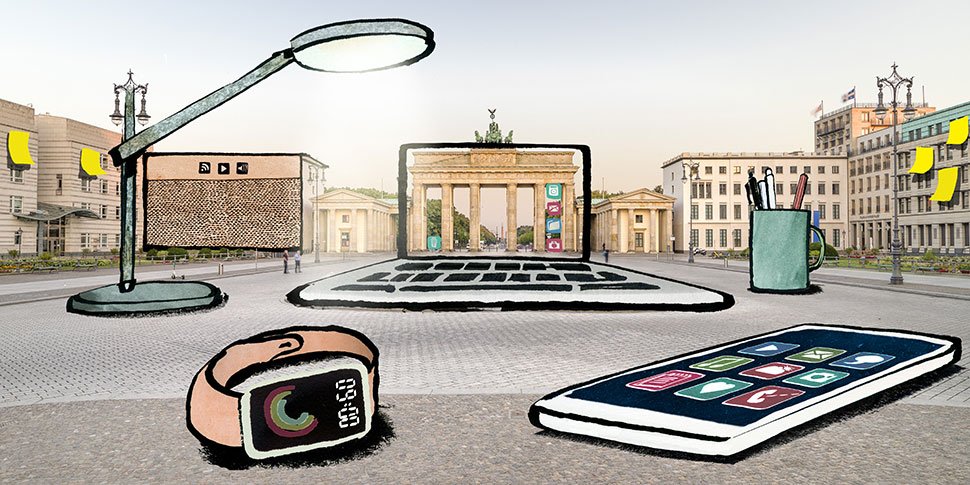
Digital Life
In 2020, many companies have increased opportunities for working from home. According to a survey by the DAK health insurance company, 48 percent of employees feel that digitalization will ease the pressure on them. More than 60 percent rate as positive the time saving due to the absence of commuting and the time flexibility. The digitalization of various areas of life can bring many advantages but also risks. Fraunhofer FOKUS is researching to exploit the full potential and make digital life safer.
Digitalization is also unstoppable in the world of education and work. In 2019, almost half of all students used the video platform YouTube, for example, to review content from lessons at home or to do homework. There is potential for a virtual representation of educational content for vocational training or lifelong learning. In the project SLOW an online learning platform was designed and tested at Fraunhofer FOKUS. Through digital media, learning recommendations, and a virtual chat partner, it creates benefits for courses at the Berlin Chamber of Trades or students at Beuth University in Berlin. In contrast to a pure video platform, personalized recommendations can be provided by the software or by teachers in the learning platform developed specifically for this purpose. To combine the wide variety of existing Learning Management Systems, Fraunhofer FOKUS has also developed a Common Learning Middleware (CLM), which unites the most diverse Learning Management Systems on a single learning portal and establishes a connection between the various learning systems and platforms.
Working in the “real” world can also be made easier through digitalization. Thanks to smartphones or tablets, for example, future building interiors could be designed largely without folding rulers and hand-drawn floor plans. For the project “DIGIHAND – Experience the digitalization of trades”, the business unit Quality Engineering developed an “Augmented Reality” application with which objects such as light switches, shelves, or other furniture can be intuitively placed directly on-site and saved as a model. In the digital view, existing (or planned) cables and pipes are visible.
An increasing number of people also dive into new, unknown worlds via streaming. The transmission of video streaming content generates immense amounts of data and resulting costs. To reduce transmission costs and ensure an optimal viewing experience, a research team at Fraunhofer FOKUS has developed the “FAMIUM Deep Encode Solution”. The solution uses machine learning techniques to efficiently determine the appropriate parameters for the optimal encoding of different video content types. It supports the transmission of video-on-demand through media libraries as well as the transmission of linear live content, for example, sports events.
In addition to usability and costs, the security of data and acceptance of the technologies by the users are decisive aspects of digital life. Especially in the field of telemedicine, this must be taken into account in all projects and developments. By 2017, popular app stores offered more than 318,000 health apps with a wide variety of application contexts, often involving sensitive and personal data. To measure the quality of these apps, Fraunhofer FOKUS has developed a meta-catalog with 800 possible evaluation criteria for health apps, including data and information security as well as transparency and accessibility.
Interdisciplinary research, in particular, offers new perspectives on security and acceptance of digitalization. In collaboration with the Weizenbaum Institute, Fraunhofer FOKUS is researching how digitalization can be shaped together with society.

